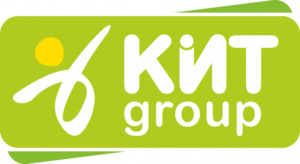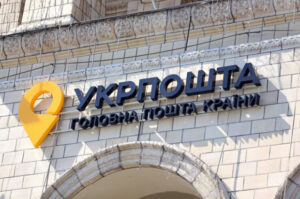
According to official information from the National Bank of Ukraine, the financial company LIBERTY FINANCE has passed the NBU inspection and continues to provide financial services in accordance with current legislation.
We would like to note that we have not received any official decisions from the Regulator, but we confirm our readiness to cooperate as an open and transparent company. All comments will be taken into account in a timely manner, which will further improve the current standards of quality and speed of service.
We would also like to emphasize that our operations are continuing as usual, and LIBERTY FINANCE customers have uninterrupted access to our secure and reliable financial services.
For reference. FC LIBERTY FINANCE is one of the largest operators in the Ukrainian currency exchange market and is also one of the largest taxpayers in its segment.
https://libertyfinance.com.ua/news/

The National Bank of Ukraine (NBU) fined Elit Finance FC LLC (Kyiv) UAH 76,500 for violating ethical conduct requirements, according to the regulator’s website.
The decision was made based on the results of non-field supervision of compliance with the requirements of Ukrainian legislation on the protection of the rights of consumers of financial services, during which facts of non-compliance by the company with the requirements established by law regarding interaction with consumers and other persons during the settlement of overdue debts (requirements regarding ethical conduct) were revealed.
The relevant decision was adopted by the Committee for Supervision and Regulation of Non-Bank Financial Services Markets on October 6, 2025.
Elit Finance FC LLC was registered in March 2016 with a charter capital of UAH 20 million.

After a year and a half of investigation, the National Bank of Ukraine (NBU) stated that Trustee Plus provides payment services in the country without the appropriate license. The regulator has ordered the company to cease some of its operations related to money transfers without opening a bank account and P2P payments in euros, according to a statement from the NBU.
The press service noted that such activities require a separate permit under Ukrainian law.
Trustee stated that it considers the regulator’s claims to be partially unfounded and insists on the legality of its work through partners in the EU. According to Trustee CEO Vadym Hrusha, the National Bank withdrew five of the seven initial claims, while the rest relate exclusively to the P2P platform and euro transfers.
“The NBU’s decision sets a dangerous precedent for the entire market, effectively banning P2P interaction between users. At the same time, customer assets are safe, and the service continues to operate in the EU in full compliance with the law,” he emphasized.
The company recalled that back in the spring of 2025, it stopped registering new users from Ukraine, but the terms of service remained the same for existing customers.
Experts note that the situation surrounding Trustee Plus demonstrates the lack of a clear regulatory framework for crypto and fintech services in Ukraine. The precedent set by the largest platform could be a signal to other players about the risks of doing business without a specific law on virtual assets. In the long term, this could slow down the development of the crypto market in the country and encourage Ukrainian companies to move their activities to EU jurisdictions, where the rules are more transparent.

The national communications operator JSC Ukrposhta intends to comply with the National Bank of Ukraine’s (NBU) capital requirements by January 1, 2026, using its own resources, without recapitalization from the budget, according to the company’s CEO Ihor Smelyansky.
“Will Ukrposhta bring its capital into line with the new requirements by January 1, 2026, as required by the NBU resolution? Yes, it will. Does Ukrposhta need additional capital from the state to do this? No, it does not. This will be done with its own resources,” he wrote on Facebook on Friday evening.
According to him, as of June 1, 2025, Ukrposhta’s capital amounted to more than UAH 4 billion. At the same time, from the same date, the NBU changed the procedure for calculating capital, which, according to the CEO, “applies to everyone, but in practice, primarily to Ukrposhta.” As a result, after revising the approaches to capital assessment, the indicator for the company turned out to be negative – minus UAH 600 million.
Smelyansky also explained that Ukrposhta had not yet submitted documents to obtain the opportunity to open a bank because it had already had a negative experience with such attempts when trying to buy Alpari Bank, which was later liquidated. The CEO noted that the company’s shareholder, the Ministry of Community and Territorial Development (Ministry of Development), the First Deputy Prime Minister, and the Ministry of Economy tried to find common ground with the regulator on how best to resolve this issue.
“Moreover, this topic was discussed last week during the IMF mission, so, of course, we did not do anything that could raise questions from our partners,” Smelyansky added.
According to him, at meetings attended by the Ministry of Economy, the Ministry of Development, and representatives of the NBU, it was agreed that Ukrposhta would submit a joint action plan with its shareholder, which would have to be approved by the NBU, and only then would it submit a package of documents in accordance with the approved plan.
“Did Ukrposhta submit a project jointly with its shareholder? Yes, it has. Has the final meeting taken place? No, it has not. Moreover, it has already been postponed three times by the NBU. Does it make sense to submit documents to the bank without an approved plan? No, it does not. Why? Because the regulator has such broad powers that it can reject any documents for any reason,” Smelyansky added.
As reported, this week, National Bank Chairman Andriy Pyshnyy said that the central bank had approached the government in response to a request regarding the fiscal risks it sees in connection with Ukrposhta’s attempts to acquire a bank.
“We have identified the possibility of the need to recapitalize Ukrposhta… The owner of a significant stake must meet the requirements set forth in the legislation: be financially capable, have a well-developed corporate governance system, and have a clear understanding and strategy for the bank. We are waiting for the supervisory board, the owner of Ukrposhta, whose functions are performed by the Ministry of Community and Territorial Development, to provide the relevant documents,” he said on September 11.
Earlier, Smelyansky stated that, despite opposition from the National Bank, the launch of a financial inclusion bank remains a priority goal and task for the national communications operator JSC Ukrposhta.
In the first half of 2025, Ukrposhta increased its revenue by 5.4% compared to the same period last year, to UAH 6 billion 505.0 million, reducing its net loss by 27.2% to UAH 311.8 million. However, the company ended the first half of this year with negative capital of UAH 101.6 million, compared to UAH 210.2 million at the beginning of the year.

In August, the National Bank of Ukraine (NBU) fined PJSC Bank Vostok (Dnipro) for violating the law on combating the laundering of illegally obtained funds for a total amount of UAH 16 million, according to information on the regulator’s website.
Fines of UAH 15 million and UAH 1 million were imposed for violations of the AML/CFT law in terms of the bank’s failure to properly implement a risk-based approach in its activities and to properly verify customers with whom it has high-risk business relationships.
In addition, the bank was given two written warnings for violating the requirements of the AML/CFT law in terms of improper performance of its duty, taking into account the requirements of the legislation, to develop and implement internal documents on AML/CFT issues, as well as in terms of the absence in internal documents on financial monitoring procedures sufficient to ensure effective risk management, and for errors in information (statistical reporting) on currency transactions.
According to information on its website, Ukrainian commercial bank Vostok is owned by Vostok Capital, whose shareholders are Vladimir Kostelman (owner of Fozzy Group), Vadim Morokhovsky, and Lia Morokhovskaya.

Despite the growing share of the euro in Ukraine’s foreign trade and international reserves, the US dollar remains the exchange rate-forming currency for the hryvnya. This was reported by the first Deputy head of the NBU Sergey Mykolaychuk in an interview with Interfax-Ukraine.
“Historically, the focus has always been on the hryvnia-dollar pair. We realize that changes are possible over time with the deepening of European integration, but there is no clear transition plan. Today the dollar remains the exchange rate-forming currency,” he said.
According to the official, the structure of reserves and settlements may change in the future, however, instruments for hedging currency risks, including forwards, are available for business.